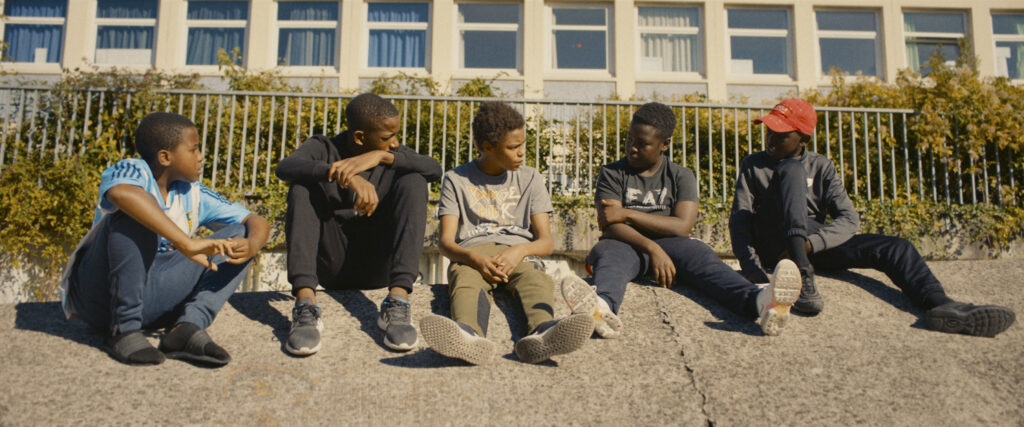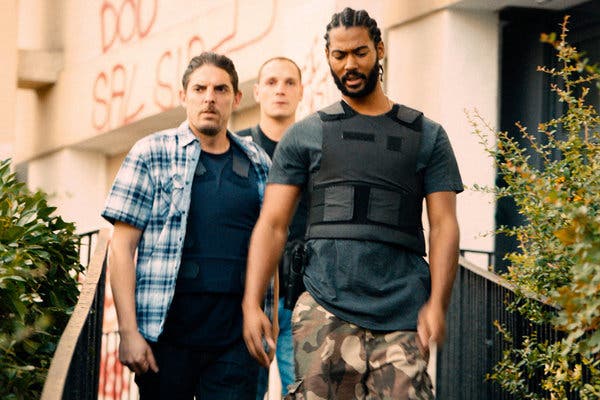This is part 1 of a series titled The French Connection. This series looks at French art and culture introduced to Philadelphia. Through analyzing the art itself, its significance to France, and even its potential crossover with Philly culture, this will be an exploration on how French art can truly impact and engage U.S. viewers.

Before watching Ladj Lye’s Les Miserables, one would assume it is anything but the actual film. Instead of adapting the Victor Hugo novel, this instead tells its own story, playing more like a cop thriller in the style of Training Day or fellow French film La Haine than a Hugo adaptation. However, the spirit of Hugo is very much alive. This is because the film references him and his famous book and even concludes with a Hugo quote. However, most importantly, the spirit of the novel is in tact. Rebellion. Anarchy. Prejudice. Corruption. Class. Oppression. Everything the novel focused on is in tact here. But it’s through a modern setting that explains the current divisions that still exist in France. And through fast-paced action and killer, if on-the-nose dialogue, Ladj Lye shows why this story is still integral to France.
The Irony of it All
The opening sequence, before the title even appears, is during the World Cup celebrations in 2018. The streets of Paris are filled with cheers and people of all races and creeds coming together to celebrate their country, as French flags fly and happiness permeates through the city. It expresses a strong sense of unity the country seems to have, celebrating all walks of life. It’s not necessarily important when it comes to the rest of the plot, but it is necessary when it comes to the film’s main themes.
The actual movie focuses on two groups: three police officers and an African-Muslim neighborhood. And due to an innocent, if rebellious teen’s prank, both groups find themselves in a heated battle full of paranoia, violence and bigotry. And through this gripping saga full of twists and turns, it proves the “unity” showed on that 2018 day wasn’t exactly accurate.
It’s a brilliant introduction. In just a few minutes, all the themes are laid out through smart juxtaposition. This leads to viewers seeing the anxiety, fears, and, of course, misery that poor citizens, especially minorities, still face in France. And titling itself after a 150-year old book about these same issues just makes it all the more stunning. This film simply would not have worked without this sequence.
Dimension is Key
The trio of cops focused on in the film are all integral and interesting. Stephane (Damien Bonnard) as the rookie, Chris (Alexis Manenti) as the power abuser, and Gwada (Djebril Zonga) as the complicit one all have a strong dynamic, and all have depth and dimension. But the one aspect Ly excels with is the Muslim neighborhood of Montfermeil. The kids in the movie are all residents of the actual neighborhood, with most of the characters sharing the same name as their actor. The two stand-outs are Issa (Issa Perica), the boy who started the prank, and Buzz (Al-Hassan Ly), who owns a drone that records something the cops don’t want public.

Ly doesn’t make these kids saints. They’re rebellious and disrespectful to the law and their Brotherhood. But they’re kids. And Ly knows that they’re kids. But due to their race and creed, they are forced to grow up and are forced into complicated situations they shouldn’t be in. It’s a tragedy, but an important one. Through these boys’ eyes, viewers see the world they live in. One where the world is out to get them, abusing them at every turn. It’s a harsh message, but a necessary one.
This leads to a gripping and terrifying climax, where the oppressed fight back. It’s a violent yet striking showcase of revolution that smartly ends on a conflicting note that lets audiences think more about what they just saw for 103 minutes.
The French-US Connection
Les Miserables is a French movie also inspired by a French novel. Therefore, the film dives into topics tailored more to that country. Ladj Ly, and the film’s script, alludes to the fall of 2005. That saw a three-week riot against police harassment towards North African immigrants and the death of two kids via electrocution.
Ly said the film was inspired by an incident of police brutality he recorded ten years ago. This shows France still has issues of police abuse years later. And of course, since Victor Hugo’s novel focused on the June Rebellion, the film is much more about French politics than anything else.
But as I sat in that theatre, surrounded by half a dozen other patrons, I do see a lot of the film in the US today. Stories of police brutality have always been a presence in the news, especially in the last few years. And one scene in particular, which sees the cops frisking teenage girls, definitely shows the evil that comes from Mike Bloomberg’s stop-and-frisk program that has put the man under such scrutiny recently. Though the film focuses on one country, there’s enough universality to make it easy to relate to a Philadelphia citizen.
The conclusion is perhaps the one element I hope Philadelphia viewers internalize. It does not end happy, nor does it really answer any questions the film asks. However, it is the finest example of revolutionary rebellion that defined the famous Hugo novel. It shows the importance of rebellion and rising up against oppressors. It shows the power imbalance in society and the importance to fight against such inequality. True, the ending goes into extreme anarchy. However, it could be that extreme anarchy is the only way to go.
To Sum Up…
Ladj Ly’s Les Miserables succeeds as a loud cry for rebellion. It’s through its great characters and memorable story that this shines as a worthy successor to the French novel. And while some may be disappointed this is not a straightforward adaptation, I hope plenty will be open to this modern and fresh French feature.